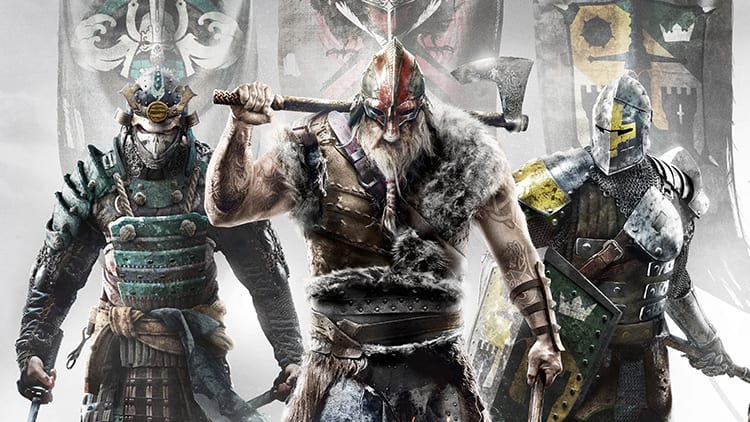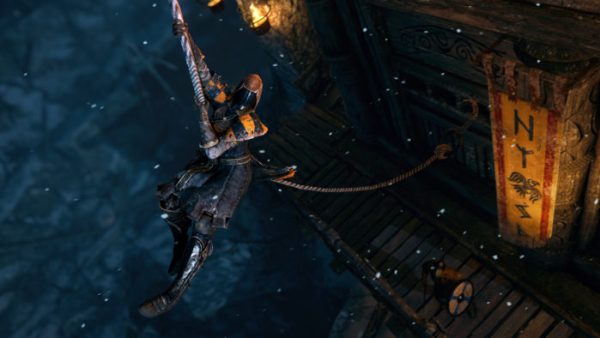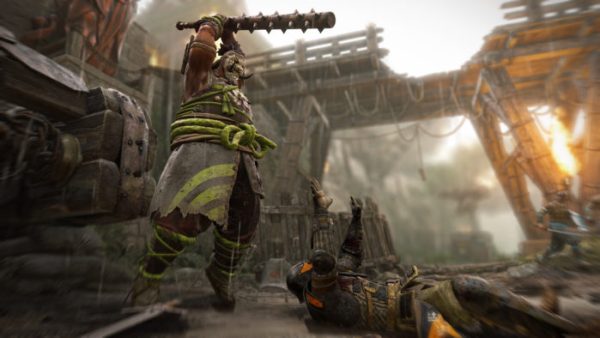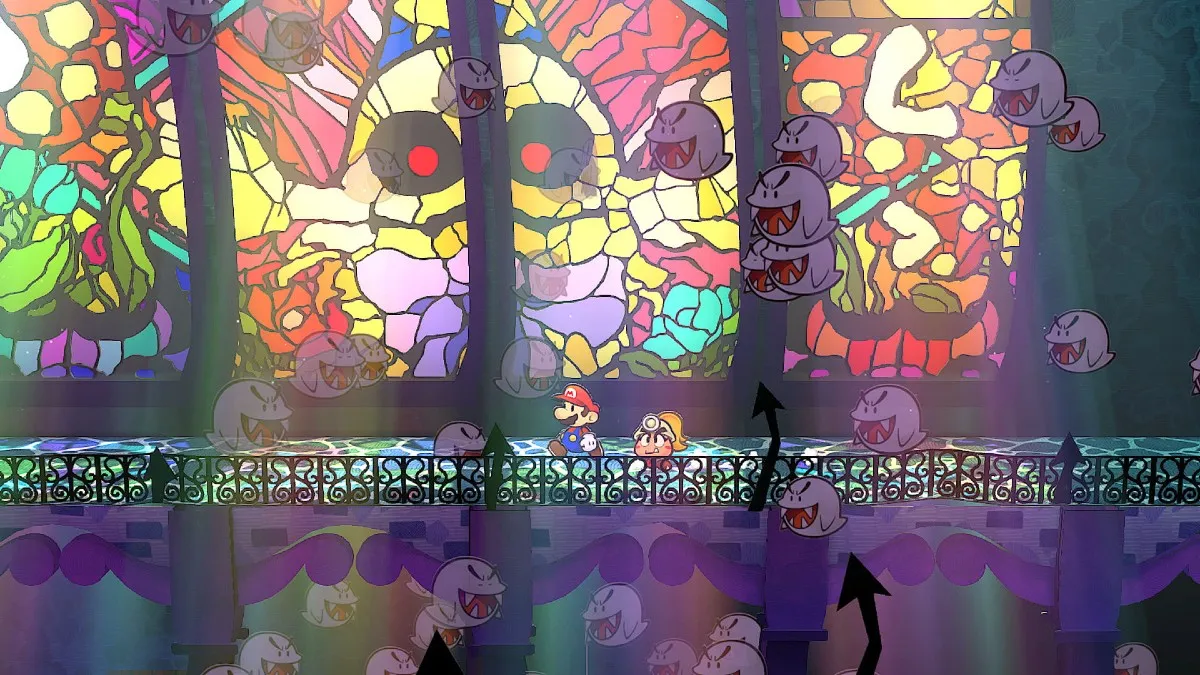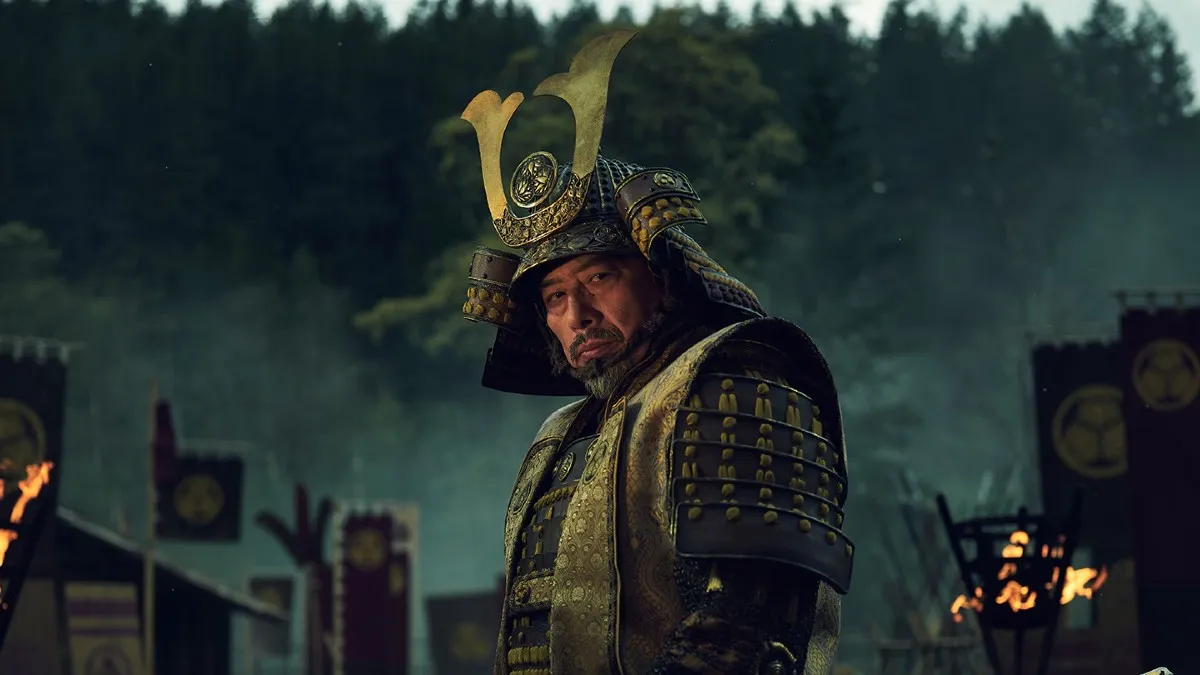For Honor is definitely an interesting project from Ubisoft Montreal. While Ubisoft as a whole has been delivering either huge, story-driven action games one side, or smaller, indie-influenced experiences on the other, For Honor sits somewhere in the middle. In many ways it can be most compared to their recent tactical, team-based shooter Rainbow Six Siege, only it’s bigger than that.
If you’ve ever seen the popular PC game Chivalry in action, then you have a decent idea of what’s going on here. There are bases to storm and points on a battlefield to control, and you will take control of a soldier of some sort to ensure that it’s your team who seizes victory at the end of the day. The major difference here is that you don’t necessarily have the same types of soldiers. This isn’t merely medieval warfare that puts squires and knights against… well, other squires and knights. For Honor takes three very different factions that approach conflict in diverse ways to do battle. You have the Knights who believe a proper suit of armor and a large blade can stop any incoming threat. The Samurai are all about precision and strategy, using smarts to defeat overwhelming numbers and power. Then there’s the Vikings, powerful, sometimes a bit on the naked side, but terrifyingly aggressive to the point that it’s not unheard of for a fully armored individual to run from a Viking wearing little more than a bear hat.
That diversity that’s offered by the factions is where For Honor’s strength lies most, and it’s something we really got to experience recently when we got some hands-on time with some new content. We’ve had a chance to check out the game in the past, and it was already impressing us in its early stages. But if I’m being completely honest, the variety was subtle at first, offering strong warrior types who were geared more towards their factions battle style but were generally interchangeable. However, with the three new heroes introduced, things have gotten a whole lot more interesting.
Two of the new combatants are the Shukogi and the Warlords, heavy warriors from the Samurai and Vikings respectively. The Shugoki is a large, unarmored man who wields a giant club to decimate anything in his wake. He is virtually a juggernaut who lacks speed but has many unblockable attacks and the ability to stun and knock back other warriors with ease. Warlords, on the other hand, are all about proper defense who rely on throws and more unblockable heavy attacks to keep opponents’ backs against the wall. They can actually attack while holding their shields up which made for an interesting challenge when facing up against one.
However, even though the new heavy heroes were impressive, the new type that stood out to me most during my play was the Peacekeeper, which also happens to be the lightest in the game to be revealed thus far. Peacekeepers are assassins who rely strictly on speed and their ability to dual-wield in order to overcome opponents, but they are severely lacking in defensive capabilities. While playing as one of these, I was able to block, but it rarely offered opportunities to counter since I was often left stumbling by the heavier blows. Yet, blocking isn’t the only way to avoid damage, something I quickly learned to adjust to during my time with the game. Peacekeepers have a much more responsive and fluid dodge ability which allows players to sort of dance into and out of battle with ease while quickly striking, whittling away at an opponent’s health. They even have the ability to inflict a bleeding effect, causing damage over time.
It was interesting to see how the developers implemented a much lighter class on a battlefield that is full of steel and power. I was worried about there being a much higher difficulty. But, while it was indeed more challenging to play the Peacekeeper (as it should be), it never felt unfair. There was a surprising amount of balance, with all my weaknesses having a fair amount of strengths to balance it out. Sure I couldn’t block very well, but the other classes couldn’t quickly dance around an enemy as I proved quite capable of doing, and the damage over time effect was invaluable when ganging up on an enemy with my team.
Helping the new characters stand out was a brand new mode that really puts player’s skills to the test: Elimination. Elimination is a 4 vs. 4 mode in For Honor that removes all AI soldiers before separating players on a map in pairs, as if they were about to duel. From that point on, it’s up to you and your team to decide how you want to approach the battle. You can face off against the opponent in front of you or run to join a partner to flank someone else. There’s a strategy in choosing who to face and what part of the map to battle in, as each has its own power-ups and threats. Adding an extra layer was your ability to execute an opponent (which completely removes them from the match), or to simply defeat them and use them as bait since they could still be revived by their teammates. This is when the different class abilities and builds came into play. The Peacekeeper’s speed and stealth-like movement made it perfect for snagging revives, but its lack of defense meant it was vulnerable to being set up. Heavier classes could charge in and draw attention, but their lack of speed made it difficult to completely fend off multiple foes. Choosing the right warrior and knowing when to fight or flee was of the utmost importance.
It proved to be one of the best ways to experience the combat from my time with the game as it gave you nothing to hide behind. There was just you, your three teammates, and your enemies. It had a pure air about it, and it let For Honor’s strengths shine without having too much going on at once. I easily spent an hour just in this mode without even realizing that time had passed, a testament to something that is truthfully just fun to play.
Of course, there was one question that had been clawing at the back of my mind ever since I first saw For Honor in action a couple of years ago. What was tying this all together, bringing these three factions, who should not be locked in war together, to the same battlefield? And the answer is actually a simple, but effective one: for home. Prior to the events of the game, there was a huge cataclysm of sorts that sent many parts of the world into ruin. This lead the three factions to search for a home where they locate the mass of land where everything takes place. As they each stumble into the same, resource-rich nation they realize that they’re going to have to fight for their piece of the pie. With many having nowhere else to turn back to, it became a matter of fight or die. What’s most interesting is how this relatively simple story ties into Faction War, For Honor’s persistent game mode.
This is a way that the developers created to allow all platforms to influence one another. When you start For Honor, you’ll have to pledge allegiance to one of the factions (though this doesn’t bar you from using any character you want). Doing so will lead to you earning points for the faction with each action you complete. As your faction does more and more they’ll slowly take over more of the map, claiming it as a home for themselves. When the Faction War is done, you’ll earn rewards based on how your faction placed and how you placed within it. It seems simple on paper, but it does a lot to incentivize play and to reward players for their time.
The weakest point during my time with For Honor was with its single-player content, although it was more impressive this time than the last time I got a chance to see it. It has the same mechanics that you have in multiplayer, so it will definitely serve as a way for players to safely learn each character’s style. But, so far at least, it’s very linear, and the lack of spontaneity you get from human players is glaring. It’s very by the numbers, although you will get some joy out of the impressive visuals and the sheer amount of death on screen at any one time.
All in all, with the new content and features being steadily introduced, For Honor is shaping up to be a great game. When my time was done, I wanted to play more, to dive back in and test my mettle against the toughest warriors in the world. It invites you to the challenge that grips you quickly. I for one, will be looking forward to raising my banner when For Honor finally rolls around in full next year.

